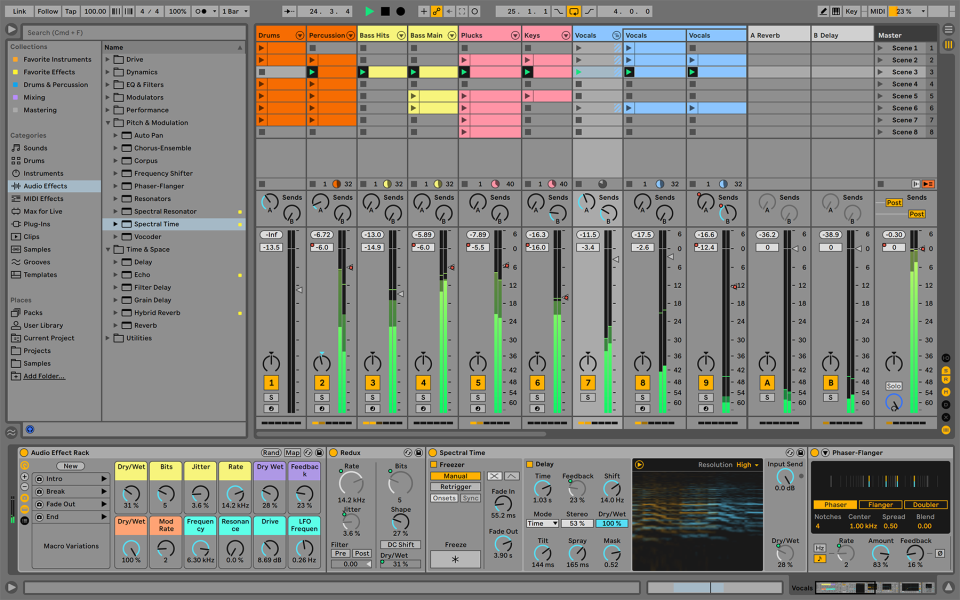Ableton Live 11 is coming next year with MPE support
It's also adding comping tools and new spectral audio effects.
Normally Ableton takes its sweet time between major releases of Live. And that’s not a bad thing. Performing musicians and recording artists demand rock solid reliability and performance. So, you don’t want to be throwing dramatic overhauls of their favorite DAW at them all the time. It was nearly five years between the release of Ableton Live 9 and Live 10. And it was almost four years between Live 8 and Live 9. So, it’s something of a surprise that less than three years after the launch of Live 10, we’re already getting official word of the next entry: Ableton Live 11.
We don’t have a concrete release date yet, but Live 11 is expected to land in early 2021 with a host of major improvements. The biggest is definitely MPE support. Basically every other major DAW from Bitwig, to Studio One, to even the lowly Garage Band supports MIDI Polyphonic Expression at this point. So it was quickly becoming a point of contention for tech savvy musicians that wanted to embrace the growing selection of MPE hardware out there. Especially as they’ve gotten more affordable. The MPE curious can even dip their toes in with the $99 Orba from Artiphon, which doubles as a standalone instrument.
In addition to passing MPE information to third-party plugins, several Ableton’s native tools have been updated with support. Most notably, Sampler and Wavetable, which should cover a lot of ground — especially multi-sampled acoustic instruments. And you can even draw in pitch, slide and pressure envelopes for each note in the new expression view.
Another major addition to Live is comping, which groups multiple passes of an audio or MIDI into individual takes so you can stitch together just the best parts. You could have always done something similar manually in Live before, but this greatly simplifies the process. It can even be a tool for sound design where you combine dramatically different sounding takes of the same melody or riff to create jarring juxtapositions, for instance.

Of course, there’s also a number of new instruments and effects. There’s a new Hybrid Reverb that combines Ableton’s physical modeling convolution engine with its algorithmic one, plus a Spectral Resonator and Spectral time which blur incoming audio in different ways allowing you to turn almost anything into a playable instrument or ambient texture. There’s also new soundpacks, including Inspired by Nature which, as the name implies, features six instruments and effects drawn from nature and PitchLoop89, which is all about digital glitches and shimmering delays.
There’s also a few new tools for adding a bit of unpredictability, like note and velocity chance. And a slew of smaller updates to clip editing, core sounds and scales mode. In short, Ableton Live 11 is as much about playing catch up, as it is about looking forward.
Perhaps the best part of the release of Live 11 is that from now, until that day (whenever it might be), Live 10 is available for 20-percent off and includes a free upgrade to Live 11 when it lands.

 Yahoo Finance
Yahoo Finance 